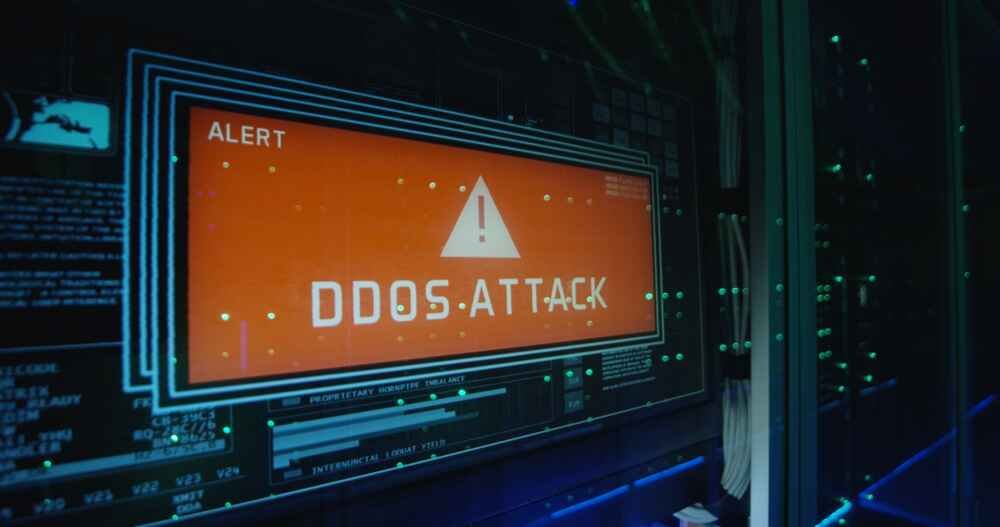10 Common Cybersecurity Threats in 2024: Protect Digital Assets
Introduction:
In the digital age of the world, the chance of cybersecurity threats has grown to be a major trouble for humans and organizations. As we strive to apprehend the complex panorama of the cyber universe, we need to be knowledgeable approximately the most current threats to protect our virtual assets. From phishing and ransomware attacks to data extortion and breaches, cyber-crypto criminals continue to hone their talents by exploiting the flaws in our virtual defenses.
When we take a look at the 10 maximum not unusual cyber security threats in 2024, it is clear that caution and proactive measures are key to protecting our virtual belongings from the safety umbrella. By informing those risks and enforcing robust safety features, individuals and corporations can mitigate dangers, defend against touchy information, and preserve belief in an increasing number of connected international.
10 Common Cybersecurity Threats in 2024:
1. Ransomware Attacks
Ransomware attacks are dangerous Cybersecurity Threats that affect computer systems. In these attacks, the data of the hackers or businesses is encrypted, after which the release of the data is usually promised in exchange for paying a ransom. Ransomware attacks have become increasingly prevalent in 2024, These attacks improve your visitor’s control and can make them sacrifice their personal or business files.
To protect against ransomware attacks, enlist the help of security software and secure file backups for mutual benefits. To protect your data from ransomware attacks, create personal information security policies and keep your data safe.

2. Phishing Scams
Phishing scams are a cyber attack that usually takes place through emails or chatbots. In these attacks, information is specifically requested for a personal or business account on an informational basis. Sometimes, this email or message appears to be from a real organization or bank to make it appear more credible. These attacks use cryptographic coding to alter the internal or external activities of the administration.
Phishing scams are one of the most common Cybersecurity Threats in 2024. To avoid phishing scams, always keep your professional information private and secure your Internet accounts. Double-check any social media or banking website you trust and never share your identification code with anyone.

3. Insider Threats
Insider threats occur when someone inside a business or organization gets involved with a negative plan. They can primarily hinder your company’s information and planning, potentially causing business losses. Employee personal problems, espionage, and failed operations constitute insider threats. To defend against these attacks, the company must create an efficient internal security system capable of monitoring employee activities and detecting undesirable signs.
Companies need to ensure effective visibility into employee training and activities to assess and counter insider threats. Moreover, adhering sincerely to government security policies and planning human resources for internal monitoring is also crucial.

4. Distributed Denial of Service (DDoS) Attacks
A distributed denial of service (DDoS) attack is a cyber attack that makes a website or service unavailable. In this attack, several computer systems force a target to shut down, making the service unavailable. DDoS attacks remain a persistent threat in 2024, These Cybersecurity Threats are usually carried out with large and heavy traffic, which overloads the website’s server and makes it unavailable.
To avoid DDoS attacks, companies must establish a secure Internet security infrastructure that can prevent these attacks and protect servers. Also, choose a secure web hosting provider that adopts robust security measures to avoid the risks of DDoS attacks.

5. Zero-day exploits
Firstly, zero-day exploits are when a software or system vulnerability is exploited that is completely unknown to the attackers. Additionally, the peculiarity of these attacks is that they are not fully known to security companies or software administrators. Furthermore, these attacks usually exploit security vulnerabilities that are not immediately apparent and are used to infect computer systems.
To avoid zero-day exploits, administrative tasks and the use of a secure Internet are essential. Moreover, to keep your software secure, manage updates and patches regularly. Lastly, try to notify in a short period so that you can identify the threats of these attacks and take necessary steps immediately.

6. Malware Infections
Malware infection attacks mean when a computer or network feels excessively vulnerable and the effects of damage are felt on it. These attacks include advertising, espionage, and data theft, which are carried out through computers or the Internet. These attacks usually affect innocent people through alarming emails, fake websites, or breaking news. To avoid malware infections, take cyber security measures and use secure internet browsing. Carefully scan files and e-mails before filing anything unsolicited, and keep the computer secure. Perform additional investigations and notify your PC in a short period so that you can avoid future threats.

7. Supply Chain Attacks
A supply chain attack is when a participation or service is attacked to patronize its target through it. In these attacks, attackers are allowed to please the security path that allows them to attack. These attacks result in abnormally affecting data, information, or matters under the patronage of their target.
To avoid supply chain attacks, use secure Internet and secure computer networks. Arrange to see your supply chain partner companies and their security vulnerabilities. It’s also important to stay informed and recognize potential signs of an attack with a secure internet.

8. Artificial Intelligence (AI) and Machine Learning (ML) Threats
Firstly, editorial management and companies must become aware of the risks associated with artificial intelligence (AI) and machine learning (ML). Secondly, while these technologies are revolutionary and developing rapidly, their accompanying risks are increasing as well. Moreover, the use of AI and ML is bringing forward new and sophisticated approaches, especially in cyber attacks. Consequently, they can damage computer systems, steal information, and alter basic facts.
To avoid threats from AI and ML, understanding the importance of internet and software security is crucial. Additionally, by implementing security developments, we can secure the environment and enhance existing evaluation systems to reject unacceptable information documents.

9. Internet of Things (IoT) Vulnerabilities
In 2024, the seriousness of the Internet of Things (IoT) has become a major issue. Moreover, this technology connects your various items through the Internet; however, it also carries the risk of security flaws. Additionally, in 2024, the use of the latest techniques and ambushes by hackers and vandals has increased. Consequently, this can infect your home and business devices. Furthermore, for example, IP gateways, security cameras, and personal access logs can also be hacked.
This issue creates a new challenge in the Internet of Things security. Therefore, we need to adopt effective security measures to avoid the dangers of internet usage. Companies and consumers should use a safe and secure Internet connection. They should also adopt effective security protection measures to secure their devices.

10. Social Engineering Attacks
In 2024, social engineering attacks are a major cyber attack that involves human deception techniques. Additionally, these attacks involve tricking innocent people into obtaining their confidential information, passwords, or other personal information. Moreover, these attacks are usually launched via Facebook, Twitter, or emails and are targeted at specific people.
To avoid social engineering attacks, it is important to use the Internet with extra caution. Furthermore, affected individuals should be alert to any deaf signing and unusual informational requests. Lastly, cyber security awareness courses and seminars can be attended to increase their awareness.

Conclusion:
First of all, the Top 10 Common Cybersecurity Threats in 2024, affect most people in the vast Internet world and can put information infrastructures at risk. Secondly, we need to adopt security measures to avoid these attacks.
Moreover, The important thing in this regard is that we need to protect our digital principles. In addition, using a safe and secure Internet connection, effective passwords, and securing your devices are key steps.
FAQs:
Q: What are the most common cybersecurity threats in 2024?
A: Cyber security in 2024 has various threats that we need to be protected from. The most common cyber attacks include phishing schemes, ransomware attacks, insider campaigns, malware infections, and deprecation attacks. As these attacks increase in severity and number, we need to be diligent in protecting our digital principles.
Q: How can organizations protect against cybersecurity threats?
A: Secure Internet connections, effective passwords, and current software are critical measures for organizations to avoid cyber security vulnerabilities. In addition, it is important for organizations to invest in current diagnostic and remediation operations and to train cybersecurity experts so that they can counter various attacks.
Bullet Points:
- Phishing scams: Obtaining personal information by tricking innocent people through fake emails, social media fraud, or specific websites.
- Ransomware Attacks: Ransomware security of individual or company digital principles to capture and free data.
- Insider Campaign: An employee, assistant, or partner inside a company or organization knowingly leaks or copies information.
- Decimation Attacks: Increasing acceleration and stressing the system by changing traffic according to the occasion.
- Social Engineering Attacks: Gaining information by tricking innocent people into trusting them.
- Zero-Day Exploits: Affecting content by taking advantage of an unacceptable bug or community-authorized community entry framework.
- Malware infections: Ingest large amounts of innocuous content with essential information to protect data.
For Useful and Straightforward Cyber Security Information: You can read our blog “Secure Internal Communication:10 Essential Strategies Businesses“. Also, visit our blog “Cybersecurity Threats Everyone Should Know in 2024 – Inxotech” To further understand the information in the blog “Defend Your Digital Assets: 10 Cybersecurity Threats“


